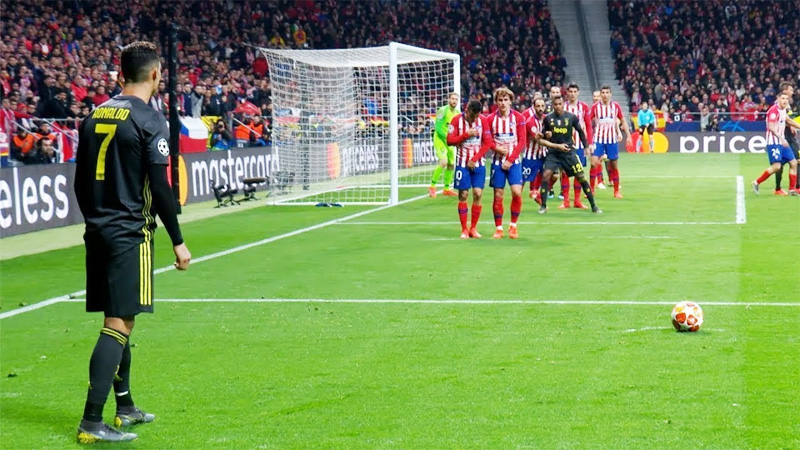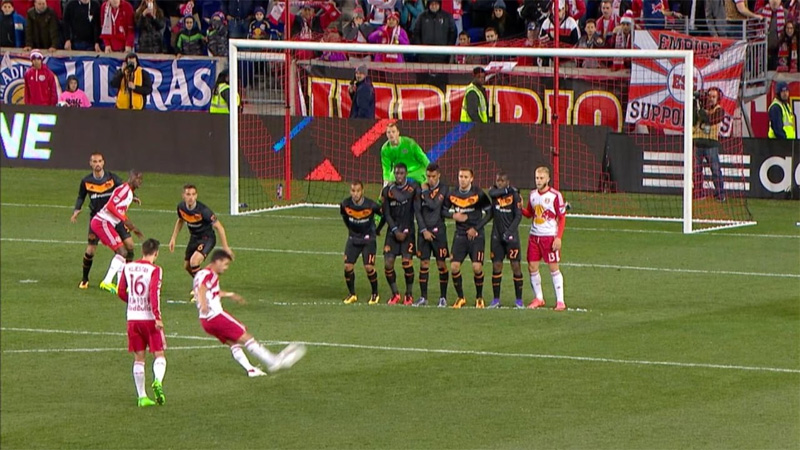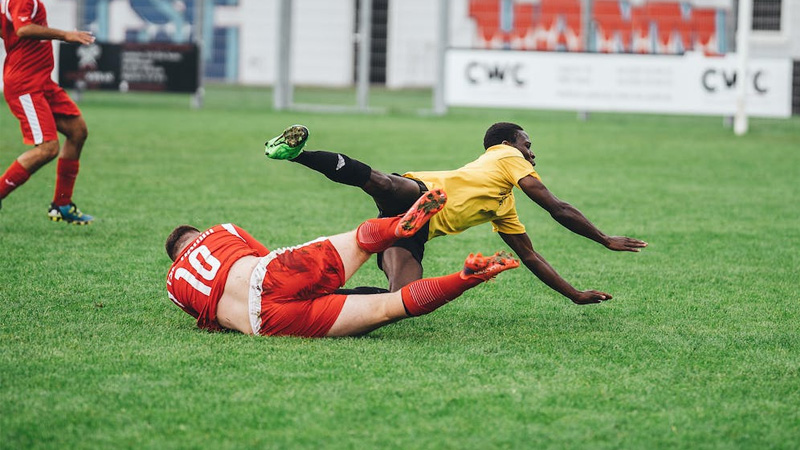Soccer, often referred to as the beautiful game, is a sport that captivates millions around the world with its skill, strategy, and sheer excitement.
However, amidst the grace and finesse, there are moments when players attempt to kick or actually kick their opponents, resulting in fouls. These acts of aggression can have serious consequences, both for the players involved and the overall spirit of the game.
In this article, we delve into the intricacies of soccer kicking or attempting to kick an opponent foul. We explore the various scenarios where such fouls occur, the rules and regulations governing them, and the potential repercussions for the players and teams involved.
Additionally, we examine the impact of these fouls on the dynamics of the game, including the potential for injuries and the influence on match outcomes.
Join us as we unravel the complexities of this controversial aspect of soccer, shedding light on the importance of fair play and sportsmanship in preserving the integrity of the game.
What Is Soccer Kicking or Attempting to Kick an Opponent Foul?
In soccer, kicking or attempting to kick an opponent is considered a foul. It is against the rules to intentionally strike or try to strike an opponent with excessive force or in a dangerous manner. This type of foul is typically referred to as a “kicking foul” or a “dangerous play foul.”
The severity of the foul can vary depending on the intent, force, and outcome of the action. If a player intentionally kicks an opponent with excessive force or in a way that endangers the safety of the opponent, it can result in a direct red card.
Here, the player is immediately sent off the field and their team must play with one less player for the remainder of the match.
Even if there is no contact made, attempting to kick an opponent in a dangerous manner can still be considered a foul. The referee has the discretion to determine whether the action was reckless or posed a threat to the safety of the opponent.
In such cases, a yellow card may be issued, and the opposing team is awarded a free kick or penalty kick, depending on the location of the foul.
It’s important to note that accidental contact or a slight brush while attempting to play the ball is generally not considered a foul. However, if the contact is deemed excessive or dangerous, the referee may still penalize the player.
The rules and interpretations of fouls can vary slightly depending on the specific league or competition, but the general principle remains the same.
What Are the Two Types of Kicks Taken When an Opponent Fouls a Player?

When an opponent fouls a player in soccer, there are two types of kicks that can be awarded to the fouled team:
Direct Free Kick
A direct free kick is awarded to the fouled team when the foul is not committed inside the defending team’s penalty area. The fouled team is given the opportunity to take a direct shot at the opponent’s goal without any intervening players from the opposing team. The kick is taken from the spot where the foul occurred.
Penalty Kick
A penalty kick is awarded to the fouled team when the foul is committed inside the defending team’s penalty area. It is a type of direct free kick, but with a special set of rules. The kick is taken from the penalty spot, which is located 12 yards (11 meters) away from the goal line.
Only the goalkeeper is allowed to defend the goal, and all other players must be outside the penalty area until the kick is taken. The player taking the penalty kick has a clear shot at the goal, with only the goalkeeper to beat.
The type of kick awarded depends on the location of the foul. If the foul occurs outside the penalty area, a direct free kick is given. If the foul occurs inside the penalty area, a penalty kick is awarded.
Both kicks provide the fouled team with an advantageous scoring opportunity, but the penalty kick is considered more advantageous as it allows for an unobstructed shot at the goal from a fixed position.
How Does the Referee Penalize Kicking or Attempt to Kick?

When a player is penalized for kicking or attempting to kick an opponent in soccer, the referee takes appropriate action based on the severity of the offense. Here are the possible penalties that can be imposed:
Direct Free Kick
If the referee determines that the kick or attempted kick was not excessively dangerous or violent, but still a foul, the opposing team is awarded a direct free kick.
The free kick is taken from the spot where the foul occurred. The player who committed the foul may receive a yellow card as a cautionary measure.
Penalty Kick
If the kick or attempted kick is deemed to be a serious offense, such as a deliberate and dangerous act, inside the defending team’s penalty area, a penalty kick is awarded to the opposing team.
The player who committed the foul may receive a yellow card or a red card, depending on the severity of the offense.
Yellow Card
The referee may caution a player by showing them a yellow card if the kick or attempted kick is considered reckless, dangerous, or shows a lack of regard for the safety of the opponent.
A yellow card serves as a warning to the player, and if they receive another yellow card in the same match, they will be shown a red card and sent off the field.
Red Card
If the kick or attempted kick is deemed to be a serious act of violence, with excessive force or intent to harm the opponent, the referee will show a red card to the player.
A red card means an immediate expulsion from the game, and the player’s team must continue playing with one less player for the remainder of the match.
It’s important to note that the referee has the discretion to assess the severity of the offense and determine the appropriate penalty based on the specific circumstances of the incident.
The rules and interpretations may vary slightly depending on the league or competition, but the general principles remain consistent.
How Does the Referee Penalize Kicking or Attempt to Kick?
When a player is penalized for kicking or attempting to kick an opponent in soccer, the referee takes appropriate action based on the severity of the offense. Here are the possible penalties that can be imposed:
Direct Free Kick
If the referee determines that the kick or attempted kick was not excessively dangerous or violent, but still a foul, the opposing team is awarded a direct free kick.
The free kick is taken from the spot where the foul occurred. The player who committed the foul may receive a yellow card as a cautionary measure.
Penalty Kick
If the kick or attempted kick is deemed to be a serious offense, such as a deliberate and dangerous act, inside the defending team’s penalty area, a penalty kick is awarded to the opposing team.
The player who committed the foul may receive a yellow card or a red card, depending on the severity of the offense.
Yellow Card
The referee may caution a player by showing them a yellow card if the kick or attempted kick is considered reckless, dangerous, or shows a lack of regard for the safety of the opponent.
A yellow card serves as a warning to the player, and if they receive another yellow card in the same match, they will be shown a red card and sent off the field.
Red Card
If the kick or attempted kick is deemed to be a serious act of violence, with excessive force or intent to harm the opponent, the referee will show a red card to the player.
A red card means an immediate expulsion from the game, and the player’s team must continue playing with one less player for the remainder of the match.
It’s important to note that the referee has the discretion to assess the severity of the offense and determine the appropriate penalty based on the specific circumstances of the incident.
The rules and interpretations may vary slightly depending on the league or competition, but the general principles remain consistent.
FAQs
Can a player fake or deceive the goalkeeper during a penalty kick?
Yes, players are allowed to use deception or feints during a penalty kick to try and confuse the goalkeeper. However, there are rules in place to prevent excessive deception.
Can the goalkeeper move off the goal line before the penalty kick is taken?
No, the goalkeeper must remain on the goal line until the ball is kicked. They are allowed to move along the goal line, but they cannot move forward or off the line until the ball is in play.
Can a player other than the one fouled take the penalty kick?
In most cases, the player who was fouled is the one designated to take the penalty kick. However, if the fouled player is unable to take the kick due to injury or being substituted, another eligible player from the same team can take the penalty kick.
Can a goal be scored directly from a penalty kick?
Yes, a goal can be scored directly from a penalty kick. If the ball crosses the goal line and into the net without any infringement, it is counted as a goal. If the ball hits the post, crossbar, or goalkeeper and then goes into the net, it is also considered a goal.
Can the defending team make substitutions before a penalty kick?
Yes, the defending team is allowed to make substitutions before a penalty kick is taken. However, the substitutions must follow the regular rules of the game, and the referee must be notified of the substitutions before the kick is taken.
Bottom Line
As the final whistle blows, it becomes evident that soccer kicking or attempting to kick an opponent foul is a contentious issue that demands attention.
The consequences of such actions extend beyond the immediate impact on the players involved, affecting the spirit of the game and the reputation of the sport as a whole.
By understanding the rules and regulations surrounding these fouls, players can strive for fair play and sportsmanship, ensuring that the game remains a showcase of skill and camaraderie.
Coaches, officials, and fans also play a crucial role in promoting a culture of respect and fair competition.
As soccer continues to evolve, it is imperative that we address the issue of foul play head-on, fostering an environment where players can express their talents without resorting to aggressive tactics.







